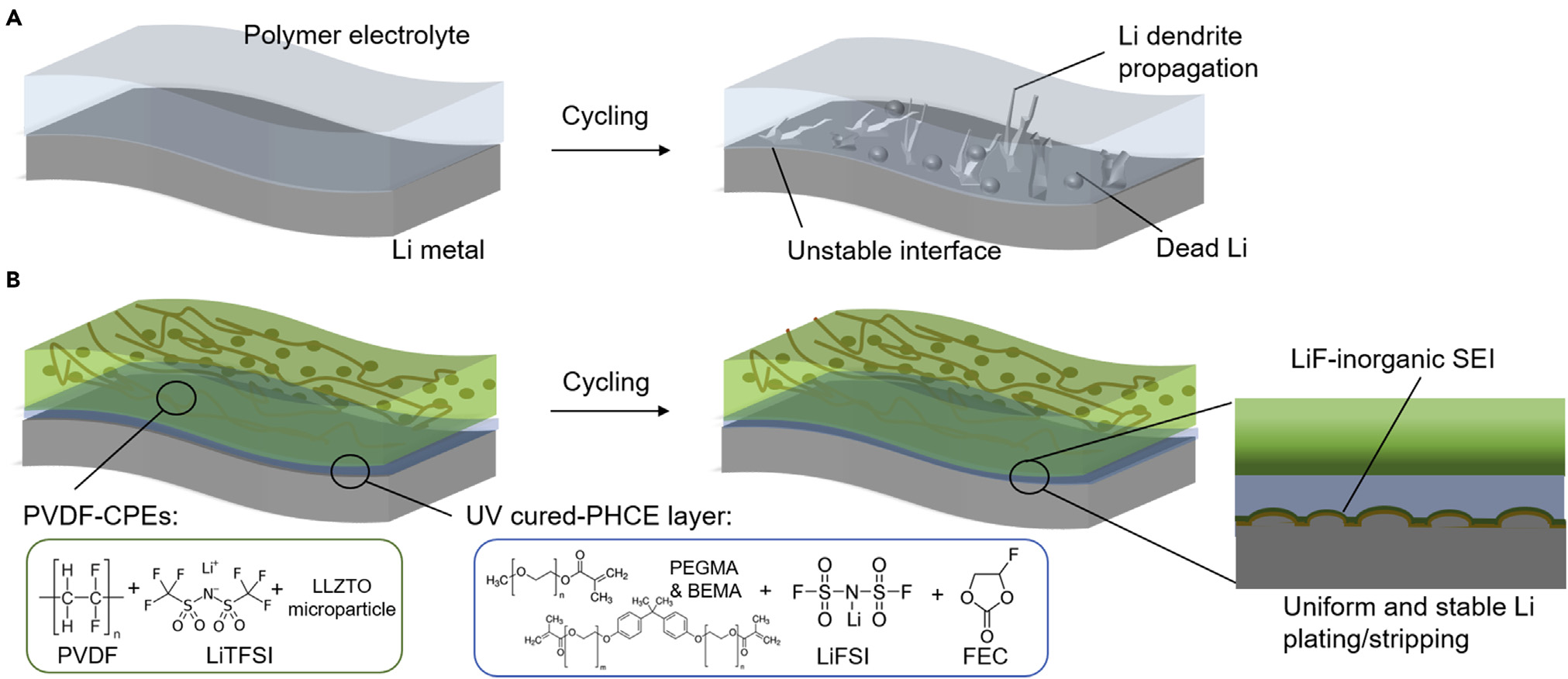News Story
Next-Gen Lithium-Metal Batteries

Illustration of the interface design of inorganic-rich SEI using UV-cured PHCE thin layer.
Rechargeable batteries, used in hand-held devices, solar energy equipment and electric vehicles, to name a few, are currently all the rage. Beyond lithium-ion batteries, the lithium metal battery is the most desired in sustainable energy technology, but volume fluctuations and dendrite issues in the anode have raised safety concerns.
Researchers around the world have explored solid-state Li-metal batteries (SSLBs) using nonflammable organic, or inorganic, solid-state electrolytes as next-generation energy-storage devices. SSLBs are expected to provide high energy and high power density, while eliminating safety concerns. Many of the problems are due to stress and strain during the charging cycles, often resulting in dendrite formation.
To circumvent this problem, a research group led by Chunsheng Wang in the University of Maryland (UMD) Department of Chemical and Biomolecular Engineering (ChBE) has developed a new design of composite polymer electrolyte (CPE) polymeric highly concentrated electrolyte (PHCE) by inserting a thin, salt-rich interlayer via rapid UV polymerization. Tao Deng, a ChBE post doc researcher, served as first author on the study.
"This LiF-rich solid electrolyte interphase gives way to a rigid but flexible surface, which suppresses the formation of Li dendrites and dead Li often accumulated in cycling," said Deng. "What's more, the lithium metal battery with Co-free LiNiO2 cathode boasts a power retention of 81% after 200 cycles."
During their study, the team found that the CPE-PHCE membrane presents enhanced ionic conductivity, a high Li+ transference number of 0.67, and high oxidation stability of 5.0 volts. Moreover, this electrolyte design enables high-energy-density lithium metal batteries with excellent electrochemical performance including high-capacity retention, rate performance and high Coulombic efficiency (>99.8%).
"These SSLBs with the CPE-PHCE membrane exhibit exceptional electrochemical performance and long cycling stability," said Wang. "This approach of SEI design is versatile and can also be applied to other types of batteries."
For additional information:
Tao Deng, Longsheng Cao, Xinzi He, Ai-Min Li, Dan Li, Jijian Xu, Sufu Liu, Panxing Bai, Ting Jin, Lin Ma, Marshall A. Schroeder, Xiulin Fan, Chunsheng Wang. In situ formation of polymer-inorganic solid-electrolyte interphase for stable polymeric solid-state lithium-metal batteries, Chem, 2021. https://doi.org/10.1016/j.chempr.2021.06.019
Published August 4, 2021









